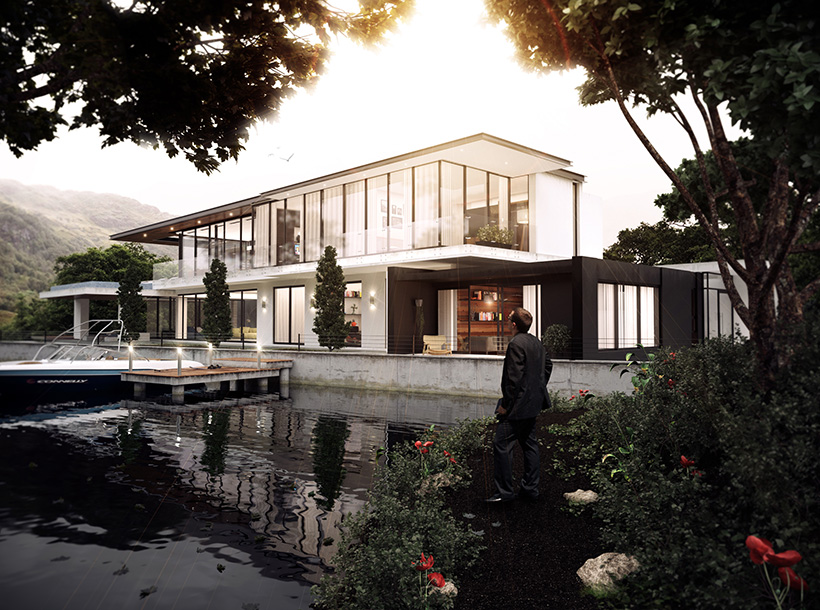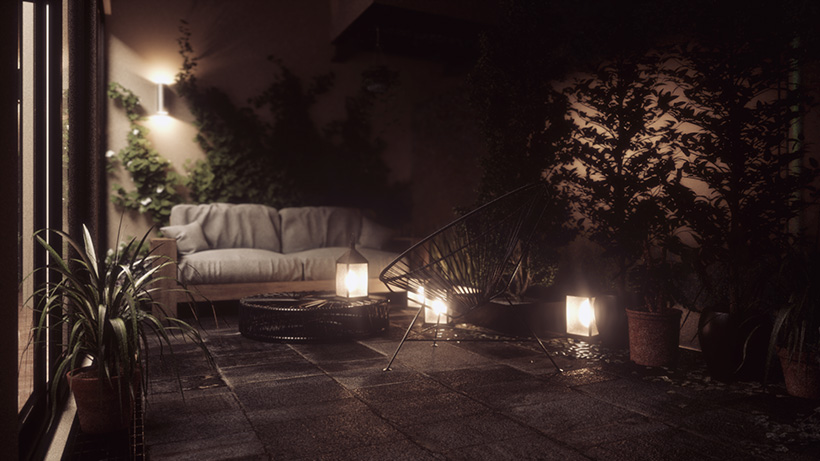Tell us a bit about yourself. Who are you and what do you do?
Hi, I’m Fernando Valdés. I was born in Mexico City, Mexico. I studied industrial design and I work as independent arch-viz specialist for several Mexican architecture firms.

I have more than 10 years experience in 3D visualizations. I have great passion for architecture, and that passion makes me focus on interior design. As an industrial designer I try to give my clients a different approach on the architecture projects, having different interests in an image the architects want a good understanding on their projects and I add the artistic view, a mixture that is not always easy to find.
How did you first get started doing 3D?
My first steps in 3D were in college, when I created some renders of industrial design projects. To be honest, I did not like to use 3D, but it was the best tool that we had. We used Rhinoceros and Flamingo.

My thinking about 3D changed when I worked for SOMA (Michel Abboud Architect). That’s when I really started creating 3D for architecture propose. A friend showed me what I needed to start, my first renders were not good, but I tried to do it better every time. I studied a lot on public web sources and communities and started learning new things, tricks, advises and other cool stuff.

What software do you use in your pipeline?
I use mainly Maya to realize the models in 3D, then with Maxwell render I make materials, lighting and render, and finally I use Photoshop and After Effects for post production.



We really like your latest render of a terrasse. How did you go about creating it?
Thank you very much, this was a personal project, I wanted to create a space in which I would like to be. Based on a project that was finished I started changing some things based on my personal preferences until I was satisfied with the space.
In most of my projects I always try to look for new challenges, things that force me to learn new things. In this case I simply wanted to play with the lighting, to do a single render and with the light to create different atmospheres.

Did you face any difficulties, and how did you overcome them?
Creating scenarios that do not exists is always difficult, it is not just matter about creating a nice image, for me is about creating that feeling that makes you want to be there. And to create that feeling of the elements is very important for me; lighting, materials a plant or a tree – any of the elements in the space have a purpose.
In the terrasse project I was not convinced at all if I should use the background plants, but with a little depth of field in the post production it was solved. Every resource is valid without abusing this.
I think beyond technical difficulties, the biggest problem was how long do I feel satisfied with the space. I could spend days and days doing corrections, removing and putting in plants or other objects. I think I decided to finish it at a good time.

What’s important to know when doing arch-viz?
I think the most important thing is to understand how lighting and materials work in real life, understanding that, they will have better results in the render and will not abuse the post production. A good render can be made spectacular with the post, but a bad render is impossible to improve.
Do you have some tips for beginners who are just starting to learn 3D?
Be really passionate about this, learn new things every day, be calm if something do not have the wanted results, practice and practice. Personally one of the things that helped me most was to sign up for all possible arch-viz contests, you really see the level at which you are and you know what you should improve.
What’s been the most challenging 3D project you’ve worked on?
One of the most challenging projects was a personal project that I did as a test for TV. The idea was to use a photorealistic image in real time, it was very complicated and at the end I had to solve it in post. I had to adjust the lighting of the set in my virtual set, everything was recorded in green screen. I did only 3 stills and an illumination animation. For this project I use Maya, Maxwell Render and After Effects, but at the end I was very happy with the results, it’s a shame that it was just a test.
What do you enjoy the most about your job?
What I like most about my work is to be able to visualize places that do not exist, to make a vision of the imagination of each one and to be in constant learning. The world of 3D advances very fast, if you stay behind, it is very difficult to reach it again.
You can learn more about my work on my website.
